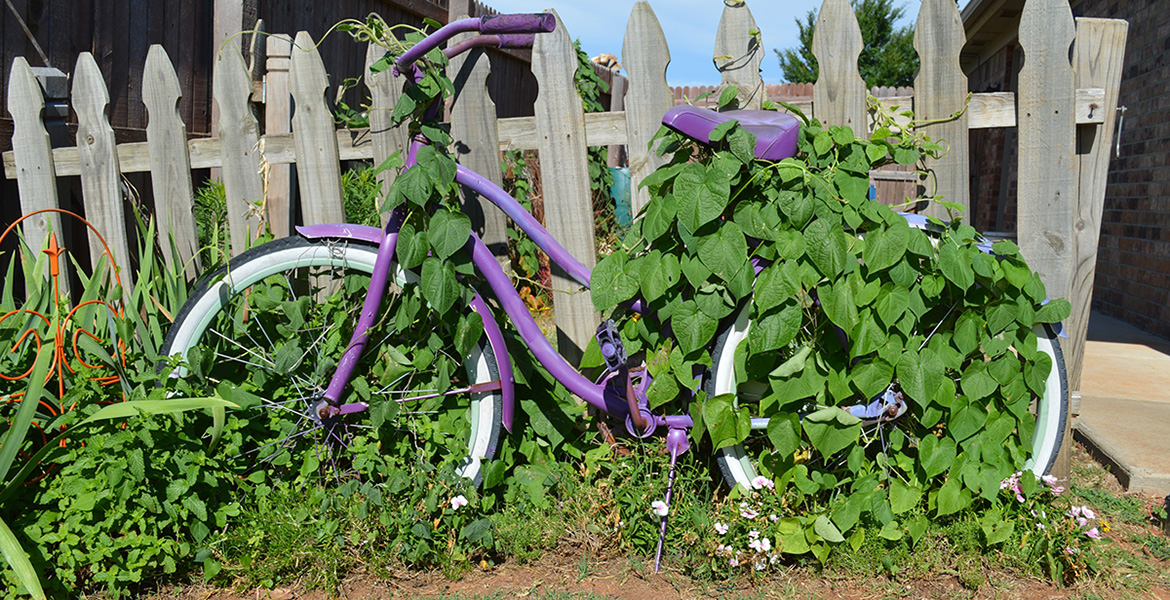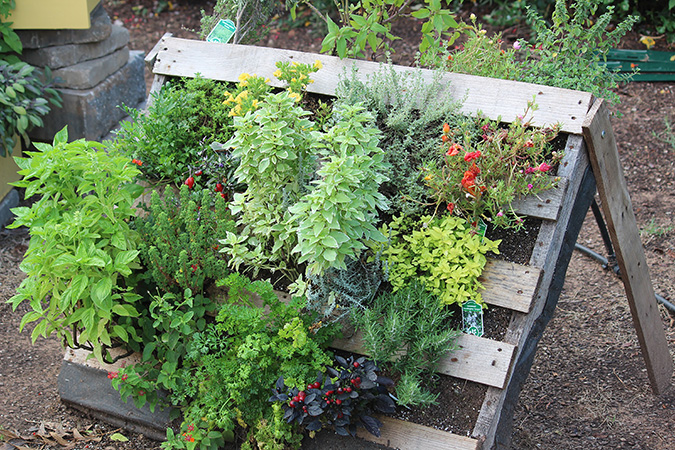
Grow more in less space with vertical gardening
Thursday, July 12, 2018
A lush landscape full of colorful flowers and tasty fruits and vegetables is every gardener’s dream. A vast space covering the landscape is what many people may envision.
However, for those gardeners who are thinking outside of the traditional gardening box and wanting to do something a little different, or for those who may be pressed for a lot of outdoor space, they may want to consider vertical gardening.
Growing plants vertically really expands the possibilities for garden spaces, said David Hillock, Oklahoma State University Cooperative Extension consumer horticulturist.
“Vertical gardening is a great way to take advantage of empty vertical space such as walls or fences. They can be free standing, as well. It’s also a unique way to add visual interest to your space,” Hillock said. “Vertical gardening has potential benefits for senior citizens, energy savings and local water systems. In addition, those who may live in apartments with only a balcony for outside space or in a home with limited yard space, can enjoy the benefits of vertical gardening.”

Vertical gardens often are referred to as green walls, but they differ from green facades such as ivy walls. When considering a support surface for a vertical garden, think about what you want to grow, whether it be flowers, vegetables or a combination of both. Obvious choices include fences, trellises, pergolas, posts, poles with strings or nets, trees or cages.
When thinking about other ways to incorporate vertical gardening into your space, just let your imagination run wild. Possible frame options include old ladders, bicycles, old wagon wheels, wooden pallets or containers attached to an existing fence. An inexpensive plastic shoe storage system hung on the fence or wall with the pockets full of soil is a great way to vertically grow herbs.
“If you have an old bicycle in the garage no one uses anymore, paint it a vibrant color and make it a focal point of your garden,” he said. “Plant some type of vine in front of it and just let it go. This will definitely add a touch of whimsy to your garden space.”
Choosing the right plants for vertical gardening is essential. While there are many plants that can be trained to grow vertically, not every plant is a good choice.
“Whenever a plant can grow and thrive by crawling up or hanging down, it’s a good choice. Pole beans, some peas, tomatoes and most varieties of cucumbers can easily be grown vertically with the necessary support,” he said. “Melons, gourds, squashes and pumpkins like upward growth, but remember, some will need more support than others due to the weight of the fruit or vegetable.”
One other thing gardeners need to take into account when gardening vertically is some plants entwine themselves onto the support, while others will need to be tied. Plants grown in a vertical garden are more exposed to the sun and air, so they’re going to dry out faster. Frequent watering is essential. In some cases, drip and micro irrigation alternatives can be combined very effectively to ensure adequate moisture.

Also, if you’re combining vertical gardening with traditional gardening, make sure to position the vertical structure so it doesn’t cast shade on sun-loving plants. It’s a good idea to plant shade-loving plants near your vertical structures.
If the area in which a vertical garden is planted is prone to wind, consider wind break protection and sturdier supports. Just as with traditional gardening, vertical gardening containers should drain well to encourage good root system development and help avoid root rot.
Growing vegetables vertically has the potential to greatly expand a gardener’s food production by increasing yields per square foot. Although it may take a little extra time to get everything set up, vertical growing can decrease fruit problems and make watering, harvesting and spraying easier. Depending on placement of these structures, vertical gardens can act as a cooling barrier between the sunlight and the residence.
Hillock said there are great benefits for those who may be somewhat limited in mobility.
“Since a green wall would eliminate most bending and extensive work, vertical gardening is a great option for senior citizens or those with mobility or other physical limitations,” he said. “They can simply walk to their garden and harvest their vegetables and herbs much easier than is possible with a traditional vegetable or herb bed. Gardening can be such a creative outlet for many people and vertical gardening is just another way to be creative in the landscape and get the most out of your outdoor space,” Hillock said.
For more information about vertical gardening, check out this “Oklahoma Gardening” video clip.
Story by Trisha Gedon
